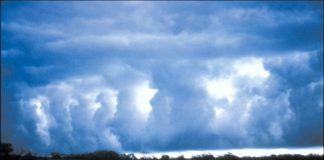Dangerous Identifiers
I enjoyed Elaine Kauh’s article, “Making Do, Part 2” back in the August 2019 issue. It accurately reflects the decisions— and sometimes the mistakes— we make trying to use our airplanes. The similarity of the Kennett, MO and Texarkana airport identifiers (KTKX and KTXK, respectively), while it may have been presented as a hypothetical complication in the article, is very real to us actually based in Kennett, MO. We frequently receive clearances to Texarkana, instead of Kennett, and ATC often questions our headings when en route direct Kennett. The farther away from home, the more often it happens.
We have attempted to get the FAA to assign Kennett a new identifier to address this problem, but so far, no luck. We can’t help but notice that both KKEN and KKNT are available. I wonder if you might consider a future article on the process that is involved in the naming, or in this case, the attempted renaming, of airports, navaids and waypoints.
Johnny Dalton
Kennett, MO
Yeah, it’s easy to present this kind of confusion as a hypothetical, but it’s got to get annoying to those of you based at on the of the oft-confused identifiers.
Here in New Mexico, we have Los Alamos (KLAM) and Alamogordo (KALM) that have a similar problem. In fact, a friend in Alamogordo recently recounted the story of a VFR pilot who landed after going all the way through a couple restricted areas associated with White Sands Missile Range and Holloman AFB , and the Holloman Class D, all on his way to landing at Alamogordo, expecting that he’d landed at Los Alamos. He had some ’splainin’ to do.
Apparently, he loaded the wrong identifier in his GPS a few states away, and never noticed until he landed and someone told him he was a couple hundred miles from where he’d expected.
We’ll plead your case to our contacts at the FAA to see if anything can be done to help resolve this safety-of-flight issue, although we’ll probably face the same uphill battle you’ve experienced. And, we’ll see if there might be an article in it.
Hold On a Minute
After being cleared to the CAKEL initial approach fix on the Tyler, TX, (KTYR) RNAV RWY 22 approach from the south, I entered the hold using a parallel entry. After turning back to CAKEL my STEC 55 autopilot sequenced me to HORDA, the FAF, with no attempt to actually fly the hold.
The controller instructed me to contact tower. Apparently, the controller and the autopilot considered that entry equivalent to completing the entire racetrack. It did accomplish the purpose of reversing course to align me on the final approach course but is that adequate?
Your magazine is great. It’s very informative. The quizzes are always a bear but it’s what I need them to be.
Lester Collins
Tyler, TX
The autopilot has nothing to do with sequencing. If you’re coupled to a nav source (GPS navigator) the autopilot is merely doing what the navigator is telling it.
Finally, although this type of course reversal on an approach is called a hold in lieu of procedure turn (HILPT), it’s not typically flown as a full-circuit holding pattern.
In normal circumstances, the purpose is simply a course reversal. So, coming from the south and hitting CAKEL, you’ll merely enter the hold, but upon passing CAKEL inbound (no matter how you entered), you’re expected to sequence to the final approach course and continue the approach. If you need more time, perhaps if you’re too high, simply tell the controller you’ll need a full turn in the hold. Then you’ll have to tell the navigator to continue in the hold rather than sequence down final.
Uh, Where’s that Obstacle?
In the March 2020 IFR Clinic, there is an obstacle at 759+/- near the Runway 29 touchdown zone for MQS. On the ILS 29, it is to the left of the runway; on the RNAV 29, it is on the right. Both charts are dated the same. It is 99 feet above TDZE. Does someone know why this is shifting around?
Bruce Bream
Cleveland, OH
Well, certainly someone does… But, it’s nobody here. Checking with our friends over at the FAA charting office, we got this response, “Thanks for the heads up on this issue. This will be reconciled for the 5/21 cycle. The 759 is the Final Approach Segment (FAS) Obstacle and the correct location is north of the runway.”
So, it sounds like a charting error that’s to be already fixed by the time you read this.




